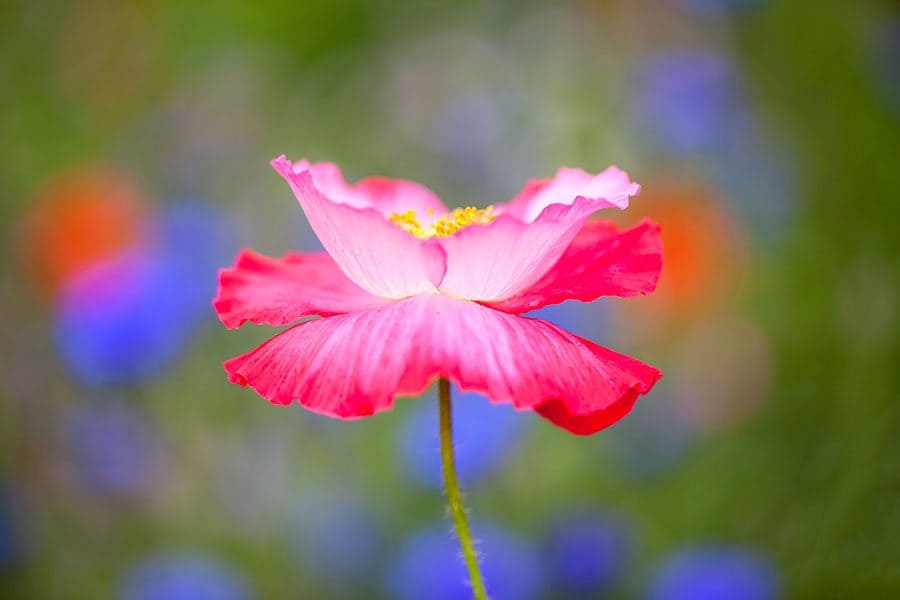Flowers are not merely botanical wonders; they are expressions of nature’s artistry, captivating the senses and nourishing the soul with their breathtaking beauty and myriad of scents. From the exotic blooms of the tropics to the rugged beauties of the arctic tundras, our planet is home to a stunning diversity of floral species, each unique in its allure and ecological role. This exploration delves into the world of the most beautiful flowers, highlighting their distinct characteristics, habitats, and the joy they bring to humans and wildlife alike.
Exotic Allure: Tropical Blooms
The tropics, with their warm climate and high humidity, are the perfect canvas for some of the world’s most vibrant and spectacular flowers. Among these, the Bird of Paradise (Strelitzia reginae) stands out with its striking resemblance to a bird in flight. Native to South Africa, this flower is not only a visual marvel with its sharp, bright orange and blue petals but also a symbol of paradise and exoticism.
Equally impressive is the Passion Flower (Passiflora), which is widely celebrated not only for its stunning appearance but also for its medicinal properties. The intricate design of the Passion Flower, often featuring a radial pattern of filaments that evoke a corona, is one of nature’s most intricate artworks, symbolizing mystery and the exotic.
Ephemeral Beauty: Cherry Blossoms in Japan
In contrast to the lasting blooms of tropical flowers, the Cherry Blossom, or Sakura, epitomizes ephemeral beauty. Revered in Japan and celebrated with the annual Hanami festival, these blossoms are a cultural landmark. The fleeting nature of the Sakura blooms, which peak for only about one to two weeks, reminds us of the transient yet poignant beauty of life itself.
Rugged Charm: Alpine and Arctic Flowers
Venturing into the colder regions of the planet, one encounters the resilient and rugged beauty of alpine and arctic flowers. The Alpine Forget-Me-Not (Myosotis alpestris), with its delicate blue flowers, thrives in the harsh conditions of the high mountains across Europe and Asia. Similarly, the Arctic Poppy (Papaver radicatum), found in the northernmost parts of the world, stands as a bright yellow beacon against the stark, icy landscapes.
Unusual and Unique: Rare Floral Wonders
Among the rarest and most unusual flowers, the Corpse Flower (Amorphophallus titanum) is perhaps the most striking. Known for its gigantic bloom and rather unsettling aroma of decaying flesh, this flower is a marvel of the plant kingdom, attracting both pollinators and curious humans with its size and smell. It blooms infrequently, making each occurrence a significant event for botanists and enthusiasts alike.
Another rare gem is the Ghost Orchid (Dendrophylax lindenii), which thrives in the swamps of Florida and Cuba. This orchid is renowned for its ethereal appearance, with its white, delicate petals that seem to float in the air, anchored by barely-there roots.
Conservation Efforts: Protecting Floral Biodiversity
While celebrating the beauty of these flowers, it’s crucial to acknowledge the efforts required to protect them. Many beautiful species are endangered due to habitat loss, climate change, and human activities. Conservation initiatives around the world aim to preserve these natural treasures, from establishing protected areas to cultivating endangered species in botanical gardens.
Connecting with Nature: How Flowers Enhance Human Well-being
Beyond their visual beauty, flowers play a significant role in enhancing human well-being. Studies have shown that flowers can boost mood, reduce stress, and even enhance productivity when used in work environments. They are also pivotal in cultural ceremonies and personal milestones, symbolizing love, respect, and remembrance.
In summary, the world’s most beautiful flowers offer much more than aesthetic pleasure. They are vital to ecosystems, beneficial to mental health, and integral to cultural practices. As we continue to explore and protect these wonders, we also deepen our connection with the natural world, fostering a greater appreciation for its complexity and resilience.


